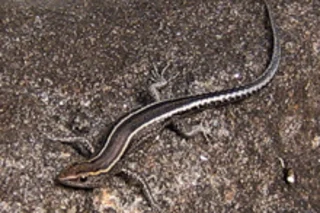In some lizard species, it's not just genetics that determines whether males or females will clamber out of hatching eggs. Some species are also governed by nest temperature, like the the three-lined skink lizard: Seven years ago, Australian biologist Rick Shine showed that low nest temperatures could overrule genetics, and cause embryos to develop into males. Now, Shine and his colleagues have taken their skink research a step farther, showing that the size of an egg's yolk also plays a mysterious role in the ultimate sex of the offspring. Physiologist Rachel Bowden, who was not involved in this research, says the study
"muddies the water" for everything researchers thought they knew about sex determination in lizards.... "It's clear that they have sex chromosomes. But it's also clear that those sex chromosomes can readily be overridden by some other factors. So, the process that leads to sex determination might be fairly ...














